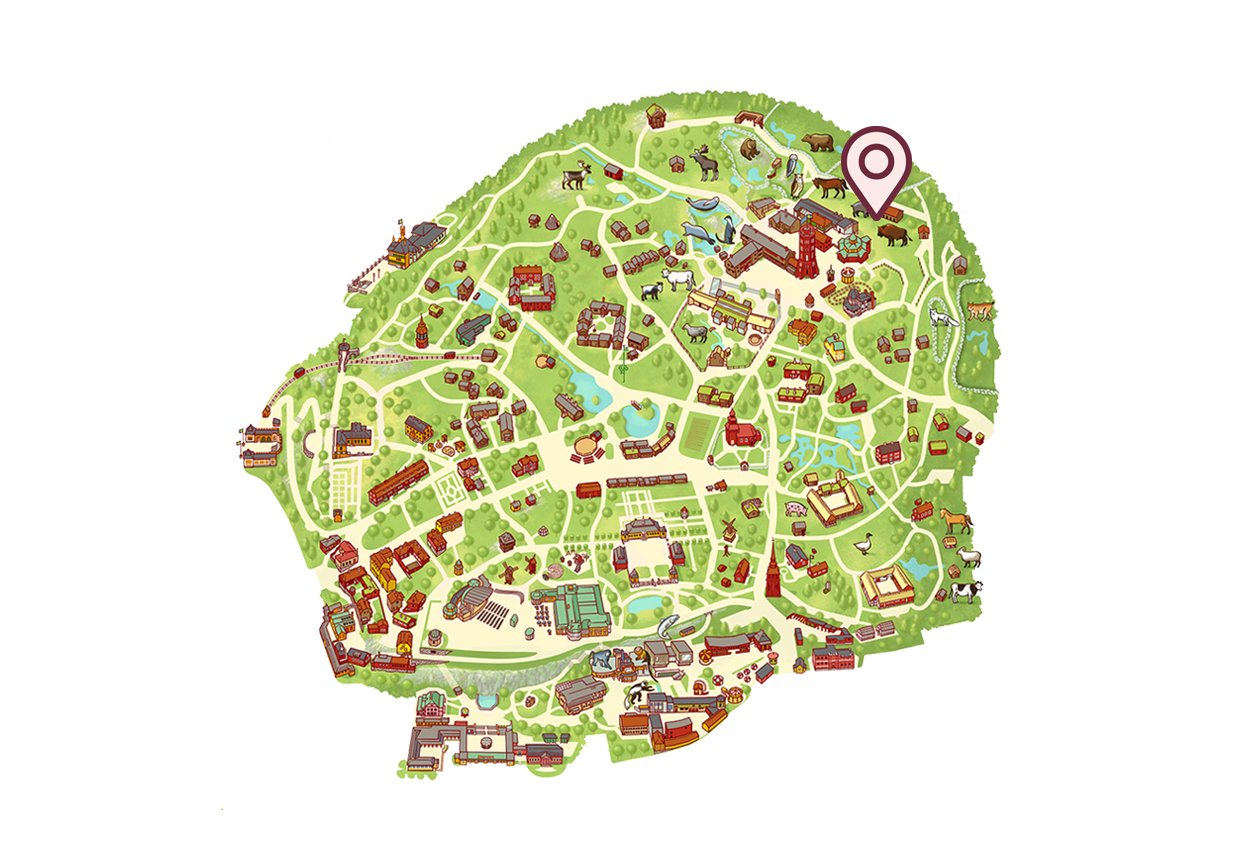- European bison
European bison
The European bison is Europe’s largest mammal. It became extinct in the wild in the 1920s, but thanks to European bison being kept zoos around the world, including Skansen, it was rescued and reintroduced into the wild. The European bison can jump across a three metre wide ditch or over a two metre high fence from a standing position!
-
Humans have always been fascinated by bison, which are one of the most common motifs in European cave paintings. The Romans were also fascinated by the giant animal, and liked to use bison bulls in their gladiatorial battles. It has also been sought-after as hunting prey due to its fur and its weight – it can weigh up to a tonne.
Part of Skansen’s conservation work
Historically, European bison were spread across the whole of western, central and southeastern Europe, as far north as the Volga River and as far east as the Caucasus. The European bison was present in Sweden during the Bronze Age when the climate was warmer than today.
-
About the European bison
Scientific name:Bison bonasus
Order:Even-toed ungulates (Artiodactyla)
Family:Hollow-horned animals (Bovidae)
Weight:500–900 kg
Length:250–270 cm
Height at the withers:180–195 cm
Sexual maturity:Approx. 3 years
August to September:August to September
250–270 days:250–270 days
Number of young:Usually one calf
Lifespan:Approx. 20 years
Eats:Plants, mainly herbs, grasses and twigs
Distribution:Mixed and deciduous forests in Europe and Asia
-
In modern times, the European bison has been widely distributed across Europe. However, it became extinct in the wild in the 1920s. Thanks to a number of animals being kept in captivity, including at Skansen, the species was saved at the last moment. As early as 1929, the first European bison were released in Poland.
Runs fast
The European bison usually moves calmly and unhurriedly when searching for food, but it is actually a very fast animal. It can turn in a small space, and can easily run at a speed of fifty kilometres per hour. It can jump across a three metre wide ditch or over a two metre high fence from a standing position.
Humped back
A fully-grown adult European bison can weigh up to 900 kilograms. Bulls are characterised by their dark brown fur, strong shoulder section, humped back, bushy mane, and short, broad head with short horns, fringe and beard. Bison cows are smaller and more slenderly built, with a less prominent front end. They weigh between 320 and 640 kilograms.
The European bison is a herd animal that thrives in true deciduous forests. In the wild, they also thrive in mixed coniferous and deciduous forests and in pine and spruce forests with plenty of ground cover. They can also be found in humid alder forests, but avoid swamps. They graze on vegetation on the forest floor, but also eat bark from oak, hornbeam and mountain ash trees.
Females with calves lead the herd
European bison cows and their calves live in loosely composed herds, while bulls usually roam alone and only follow a flock during mating. The leader of the herd is an older cow with a calf. The size of the herd changes throughout the year, and can be up to 20 animals.
Two fully-grown adult bulls cannot be in the same enclosure or on opposite sides of a fence without a fight breaking out at some point. They are particularly irritable during the mating season.
Reproduction
In the wild, the mating season is between August and September. In captivity, it can occur throughout most of the year. During the mating season there is fighting between the bulls – the strongest bull chases away the others and can then mate with the females in the herd.
The gestation period for a bison cow is between 254 and 277 days, and she normally has one calf. The cow leaves the herd to give birth in peace and quiet, staying away for five to six days before returning with her newborn calf. Calves weigh between 16 and 35 kilograms at birth. They suckle for about ten months, but gradually start eating from the age of just three months.
A vulnerable species
Recent reports suggest that wild European bison have serious inbreeding problems, and that animals therefore need to be moved between different areas. Wild European bison populations have increased from 1,800 individuals in 2003 to more than 6,200 in 2019, with a total of over 6,000 wild European bison and around 2,500 in animal parks. Wild populations are found in Poland, Ukraine, Lithuania, Romania, Russia, Slovakia and Belarus.
The European bison has ‘Near Threatened’ status according to the International Union for Conservation of Nature (IUCN) red list.
-
Bison or wisent?
The words ‘bison’ and ‘wisent’ have the same roots. ‘Bison’ is the Greco-Roman variant, and ‘wisent’ is the Germanic variant. Today, the American bison is only referred to as a bison, while the European bison is sometimes also called a wisent.
You can find the European bison here
